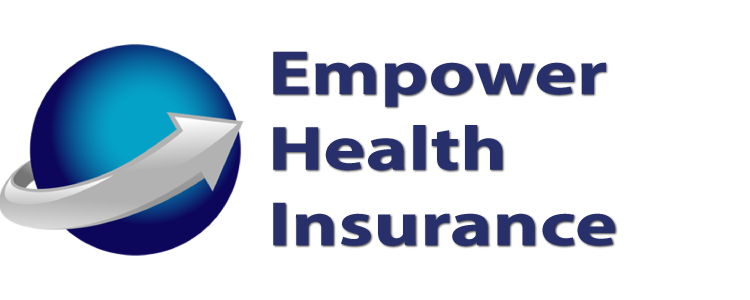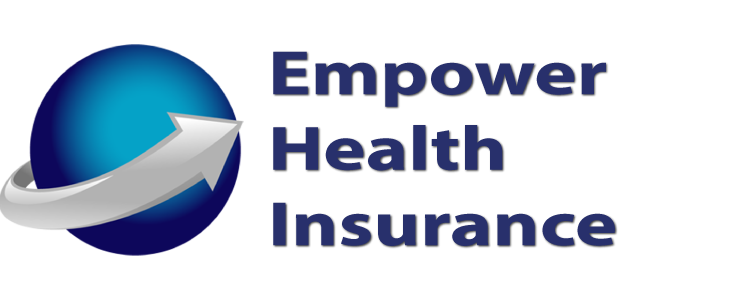If you’re online, it’s likely that not a day goes by without you encountering a new health trend. Social media is now teeming with a rich population of doctor influencers dispelling myths and recommending products, estheticians and beauty gurus with secrets they “refuse to gatekeep,” biohacker bros with 4am wake times and ice facials, and personal trainers all looking to help you tone up and slim down using their exclusive meal and workout plans.
While all of these influencers are actively competing for your attention, it can be argued that none have more actual influence than famous celebrities. When a Hollywood starlet or reality TV icon drops their beloved wellness ritual or product endorsement, it can spark headlines—and sometimes entire industries.
The problem? A lifetime of on-screen appearances doesn’t qualify anyone to make health recommendations. Many celebrity-championed trends range from questionable to downright unsafe, often blurring the line between science and fiction. And in a world where just over 50% of Americans say they’ve tried a health trend or product they saw online, according to a survey by Healthline and YouGov, celebrity influence carries real risks.
From “spot” sunscreen and chlorophyll water to vampire facials and raw food cleanses, star-powered wellness advice has all the style, but rarely comes with substance to back it up. Here, we’ll look at six of the most viral celebrity health trends and discuss what experts really think about them.
1. Jade Eggs
One wellness trend widely popularized by Goop and endorsed by Gwyneth Paltrow involves “jade eggs,” or egg-shaped stones meant to be inserted into the vagina. The practice is essentially marketed as a form of internal weight lifting—insert the oval stone to “tone” muscles, balance hormones, enhance libido, and improve pelvic health.
However, medical experts strongly caution against these claims. There is no scientific evidence supporting the idea that jade eggs do any of the benefits they’re touted for. The notion that they can restore hormonal balance or regulate cycles is especially suspicious. Saying that your body’s internal rhythm is influenced by an insertable gemstone is like putting a clay bead up your nose and saying it will improve brain function.
Jokes aside, the risks are more concrete. Jade is soft and porous–ranking between a 6 and a 7 on Moh’s hardness scale–making it very difficult to sterilize. Bacteria may become trapped in microfractures or pores, which when reintroduced to the body, can raise the chance of bacterial vaginosis, toxic shock syndrome, or other infections. Some physicians warn that the egg could also scratch or irritate delicate tissues, or even get stuck, requiring medical attention to remove.
Goop’s marketing run-in with the law underscores the problem: in 2018, Goop settled a consumer protection lawsuit for $145,000 over misleading claims about jade eggs, after prosecutors determined that the marketed health benefits (like balancing hormones, preventing uterine prolapse, or improving bladder control) were not supported by “competent and reliable scientific evidence.”
Instead of inserting a stone and hoping for a miracle, medical professionals recommend pelvic floor training exercises (like Kegels, often under physical therapy guidance), which have established scientific evidence for improving pelvic strength and function, especially in contexts like urinary incontinence or postpartum recovery.
2. Vitamin Drips
Vitamin IV therapy, also called vitamin drips, has gained popularity as a way to boost nutrient levels more directly than by taking oral supplements. The idea is simple: a cocktail of vitamins, minerals, and sometimes amino acids is administered intravenously, delivering nutrients straight into the bloodstream. Celebrities such as Kourtney Kardashian, Madonna, and Lady Gaga have reportedly used vitamin drips for energy, immunity, and even “hangover recovery,” helping to drive mainstream interest.
According to Robin Foroutan, spokeswoman for the Academy of Nutrition and Dietetics and an integrative dietitian, vitamin drips can be more effective than oral supplements—but only in specific, medically justified situations. Risks include nausea, dizziness, or infection at the puncture site, and some formulations can be harmful if dosed incorrectly. For instance, excessive magnesium can dangerously lower blood pressure.
Foroutan emphasizes the importance of receiving these treatments at a reputable clinic with trained medical staff. “Vitamin drips aren’t a one-size-fits-all solution,” she says. “They can be helpful in certain deficiencies or medical conditions, but for most healthy adults, proper diet and oral supplementation remain the safest and most effective option.”
3. Oil Pulling
Oil pulling is an ancient Ayurvedic practice that involves swishing a tablespoon of oil—often coconut, sesame, or sunflower oil—around the mouth for 10–20 minutes. Proponents claim it whitens teeth, improves oral health, and reduces inflammation or dryness in the mouth. Celebrities such as Shailene Woodley, Kourtney Kardashian, and Gwyneth Paltrow have been reported to try oil pulling as part of their wellness routines, helping to popularize this centuries-old practice among modern audiences.
However, dental experts caution that while oil pulling can temporarily reduce bacteria in the mouth, it is not a replacement for brushing, flossing, or regular dental care. According to Dr. Michael Silverman, a dentist and spokesperson for the American Dental Association, “Oil pulling may have a minor effect on reducing bacteria, but there is no strong scientific evidence that it whitens teeth or prevents cavities.” He emphasizes that oil pulling should only be an adjunct to standard oral hygiene, not a substitute.
Additionally, improper technique or swallowing the oil can lead to digestive upset or, in rare cases, aspiration. For those intrigued by the trend, Dr. Silverman suggests keeping it short, spitting the oil in the trash (not the sink, to avoid plumbing issues), and continuing traditional dental care routines.
4. Cupping
Cupping therapy is an ancient practice, rooted in traditional Chinese and Middle Eastern medicine, where heated cups are applied to the skin to create suction. This suction is believed to stimulate blood flow, promote lymphatic drainage, and alleviate pain or respiratory ailments. Some proponents suggest it may be most effective during the early stages of viral respiratory illnesses, though scientific evidence for these claims remains limited.
Cupping has gained mainstream attention thanks to celebrities like Michael Phelps and Lena Dunham, whose distinctive circular marks after sessions have sparked curiosity and social media buzz.
Medical experts caution that while cupping is generally safe when performed by trained practitioners, it can cause bruising, temporary skin discoloration, or burns if done improperly (along with other rarer side-effects like vasovagal syncope). There are also individuals who shouldn’t get cupping therapy–hemophiliacs, stroke patients, and people with pacemakers to name a few–for risks related to their conditions. According to Dr. Brent Bauer, director of the Mayo Clinic’s Complementary and Integrative Medicine Program, “Cupping can be a useful relaxation or pain relief technique for some people, but it is not a substitute for evidence-based treatments for illness or injury.”
For those interested, safety is key: avoid home experiments with fire, seek licensed professionals, and remember that results are largely anecdotal.
5. Toothpaste (and Diaper Rash Cream) for Acne
Some celebrities, including Kendall Jenner and Jennifer Love Hewitt, have popularized the age-old hack of using toothpaste as a spot treatment for pimples. The idea is that toothpaste–with chemicals like hydrogen peroxide and menthol–can “dry out” a blemish quickly and reduce its size overnight.
However, dermatologists warn that toothpaste is not formulated for skin and can cause irritation, redness, or even chemical burns. According to Dr. Whitney Bowe, a board-certified dermatologist in New York City, “Toothpaste may temporarily reduce the appearance of a pimple, but it does nothing to treat the underlying inflammation or clogged pores that cause acne. In fact, it can worsen irritation, especially for sensitive skin.”
A modern twist on this trend involves using diaper rash cream or butt paste (zinc oxide paste) as a spot treatment. While zinc oxide is a common ingredient in some acne treatments, applying this kind of ointment in large amounts or frequently can also disrupt the skin barrier, leading to irritation. What’s more, diaper rash cream is formulated to be thick, greasy, and water-resistant, so rinsing it off with warm water like you would a face mask simply isn’t possible. Even with gentle hands, it will require some scrubbing and scraping to remove, which may cause other skin issues.
Experts recommend sticking with dermatologist-approved topical treatments, like benzoyl peroxide or salicylic acid, for effective acne care. Celebrities may set trends, but skin safety comes first.
6. Eating Placenta
Some celebrities, such as Kim Kardashian, have popularized the practice of placentophagy, or consuming the placenta after giving birth. Advocates claim it can boost energy, improve mood, and enhance lactation due to its nutrients and hormones.
However, medical experts strongly caution against this practice. According to the Centers for Disease Control and Prevention (CDC), the placenta is a blood-rich organ that can carry bacteria or viruses, and consuming it poses risks of infection. There is also no scientific evidence supporting the claimed health benefits.
Dr. Jennifer Gunter, an OB/GYN and author, warns, “Eating the placenta is essentially consuming raw human tissue. There are no proven benefits, and the potential risks, including bacterial infections, are real.”
For new mothers looking to restore energy and support postpartum recovery, experts recommend well-balanced nutrition, hydration, rest, and safe supplements rather than relying on placentophagy. Celebrity trends may grab headlines, but safety and evidence should always come first, especially when a mother and child are at risk.
Reminders
Celebrity endorsements can be tempting, but it’s important to remember that esteem and expertise are not the same things. Even when a trend seems harmless—like toothpaste for acne or oil pulling—experts stress that safer, proven alternatives exist.
Before adopting a new health practice, consider these steps:
-
Consult a qualified professional—doctors, dietitians, or licensed therapists—before trying anything that could impact your health.
-
Check the evidence—look for studies published in reputable journals, not just social media buzz.
-
Focus on tried-and-true basics—balanced nutrition, regular exercise, proper hydration, and stress management consistently outperform viral “hacks.”
-
Be skeptical of “miracle” claims—if it sounds too good to be true, it probably is (especially if you have to pay money for it).
Celebrity trends can be fun to follow, but your body deserves caution and evidence-based care. Enjoy your favorite stars—but remember, their endorsements are often just another part of the performance.
Interested in learning about the newest psychological trend that’s making headlines? Check out our article here: ‘The Newest Psychological Trend: Revenge Procrastination.’
Have Health Insurance Questions?
We hope this information on celebrity health trends has been interesting to you!
If you’d like to learn how we can help you plan your retirement, call Empower Brokerage at (888) 539-1633 to speak to one of our Life and Annuity experts or leave a comment down below.
Get affordable life insurance quotes by clicking here.
See our other websites:
This article was updated October 17, 2025.

